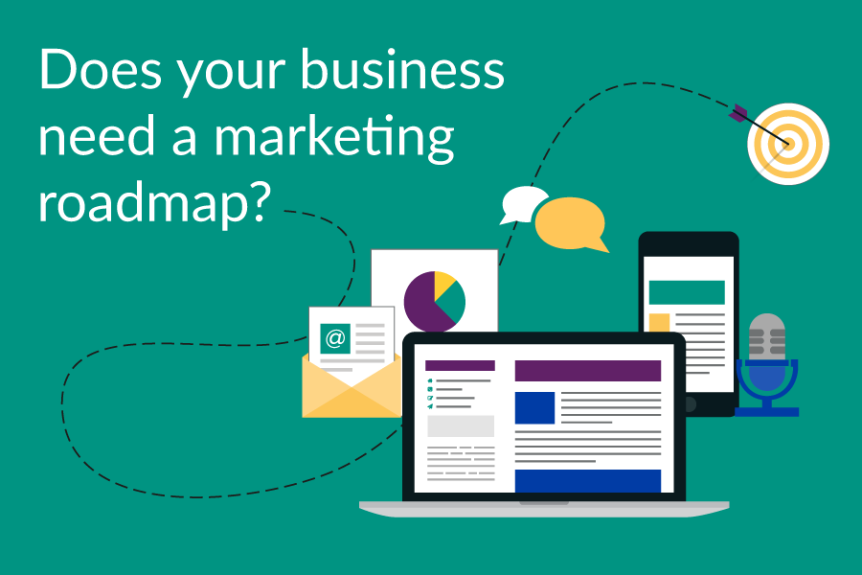Does your business need a marketing roadmap?
I recently attended a gathering of solopreneurs in Boston, and one of the questions discussed was whether they needed a marketing plan for their business. Being a marketing professional, to me it seemed to be a no-brainer: of course a marketing plan is needed…there are way too many variables in marketing to just address it on the fly, and your marketing strategies need to support your business goals. To my surprise, the majority of solopreneurs said they didn’t need a marketing plan because they needed to be agile and flexible, and able to take advantage of ever-changing marketing opportunities as they came up. As with small business owners, time is precious for these one-person operators, and there isn’t much of it to spend on writing and implementing an “old-school” marketing plan.
A flexible approach to marketing
Certainly the need for flexibility is important in marketing. Situations often change and need to be addressed when they affect your business. Opportunities can arise that you didn’t plan for, but need immediate attention. However, going through the process of creating a marketing plan lays the groundwork, and provides clarity to understand where your business is now and where you want to take it.
The “new-school” marketing plan is more of a marketing roadmap: a “living” document that is periodically analyzed and updated, adjusting quickly to changes in the marketplace, consumer trends, and communication channels. The willingness to be flexible to making changes along the way can make your marketing roadmap an effective tool to achieve business goals efficiently and cost-effectively. These changes should be based on feedback, from your customers, analytics and data, to ensure you’re on the right track while providing the ability to change direction quickly if needed.
8 Steps to Create Your Marketing Roadmap
As with any plan or roadmap, there needs to be a starting point. Here are the primary components of a marketing roadmap to help you determine where your business is now and where you want to take it.
-
Your current situation, including:
- A brief description of your business
- Your target customer and where they’re located
- Why do customers want to buy from you – what problem(s) do you solve for them?
- Describe the market where your business is located, or the market in which your target customers are located.
- What is your current branding strategy?
- How does your business rank in the marketplace? Are you the market leader?
- What are your business goals/objectives?
-
Competitive analysis
- Who are your competitors and where are they located?
- Why do customers want to buy from them – what problems do they solve?
- What is their branding strategy?
- How do they rank in the marketplace?
-
Conduct a SWOT analysis
- List your Strengths, Weaknesses, Opportunities, Threats
- Discuss the list with your team and narrow down the list to the top 3-4 for each category.
-
Set measurable goals:
Evaluating the information above, along with your business plan, set 3-5 measurable goals to be addressed in your marketing roadmap. These goals should support your company’s business objectives and bottom line. For example, “generate at least $100,000 in sales for the new Holiday merchandise line by December 31.”
-
Determine your strategies:
For each goal, determine the strategy to achieve the goal. A strategy is a high-level description of the efforts you will focus on to achieve a business goal. An example of a strategy could be “to position my business as a community partner by sponsoring at least 2 key fundraising events that are important to the community.”
-
Develop your action plan:
To support each strategy, determine an initial list of tactics (i.e. your action plan). It’s likely you’ll make some changes or additions to your action plan during the implementation period. Examples of action plan steps for the strategy above could be: 1.) research and generate a list of local charity events to consider with the team; 2.) write a press release to announce the company’s sponsorship of an event; 3.) follow up with local media to publicize the company’s check presentation to the charity.
-
Analyze results, monitor your plan, and make adjustments:
Frequently analyze your data and analytics, talk with and survey your customers, and monitor changes in the market and with consumer trends. Stay on top of changes in digital marketing and social media and make adjustments
The new method of marketing requires experimentation. Closely monitor your plan and determine what is working or not working, and why. Determine the need to change direction and adjust strategies and tactics accordingly. Analyze data and feedback. Repeat.
-
Reevaluate your plan and update:
You should periodically reevaluate your overall plan: update your situation, competitive analysis, SWOT analysis, goals, strategies and tactics to keep it fresh and on target.
While these steps may seem daunting, once you’ve created your initial roadmap, it should be easy to update it going forward. Of course there are more details to consider when developing a marketing roadmap, and you may find that you need some help putting an initial plan together. (By the way, that’s what we do). Contact us for a free consultation.
Caroline Quinn is the founder of Quinnovative Marketing, a marketing consulting business based in Plymouth, MA. With 30 years experience delivering results-driven strategic marketing, she is now focused on helping small business owners succeed. Follow her at @carolinedquinn or @quinnovativemkt

